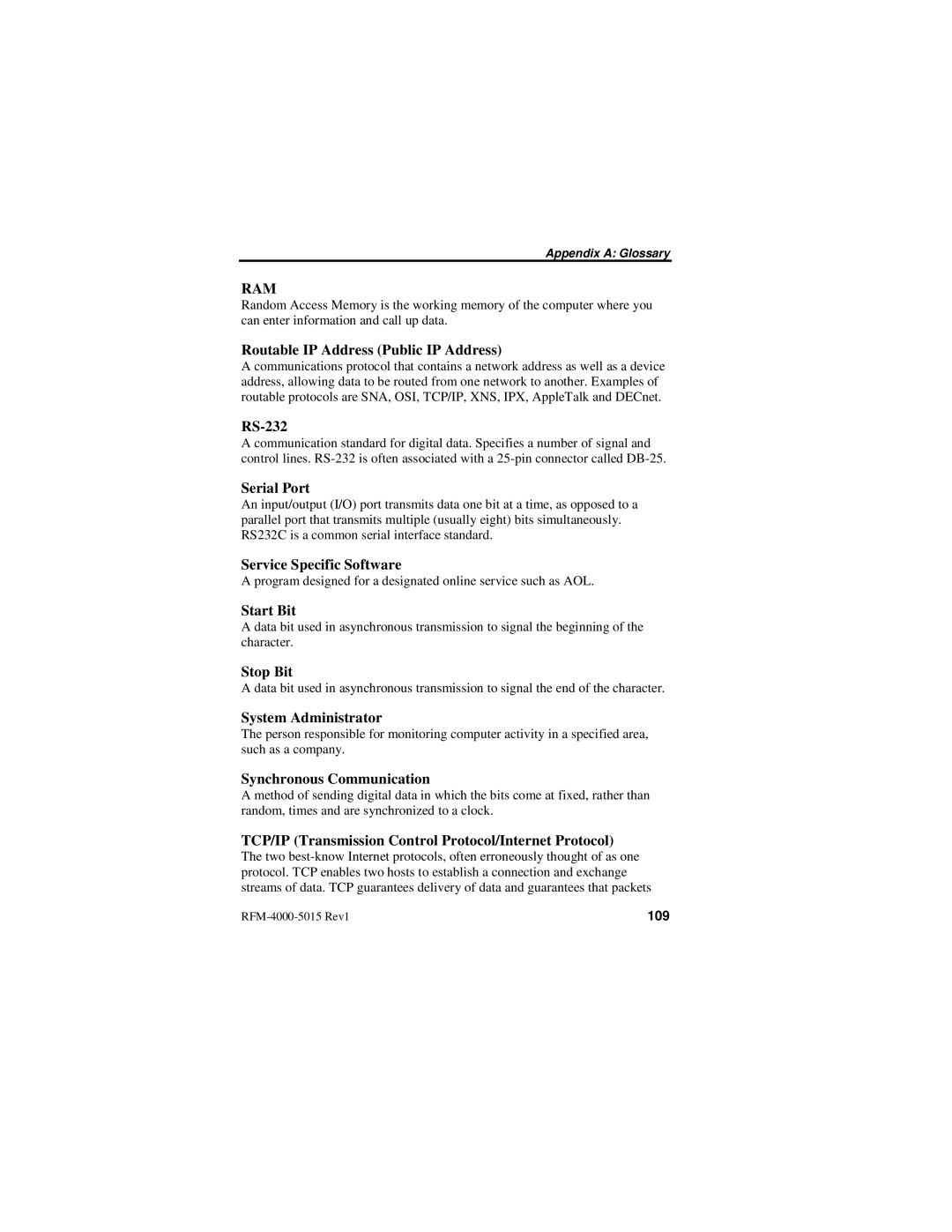Appendix A: Glossary
RAM
Random Access Memory is the working memory of the computer where you can enter information and call up data.
Routable IP Address (Public IP Address)
A communications protocol that contains a network address as well as a device address, allowing data to be routed from one network to another. Examples of routable protocols are SNA, OSI, TCP/IP, XNS, IPX, AppleTalk and DECnet.
RS-232
A communication standard for digital data. Specifies a number of signal and control lines.
Serial Port
An input/output (I/O) port transmits data one bit at a time, as opposed to a parallel port that transmits multiple (usually eight) bits simultaneously. RS232C is a common serial interface standard.
Service Specific Software
A program designed for a designated online service such as AOL.
Start Bit
A data bit used in asynchronous transmission to signal the beginning of the character.
Stop Bit
A data bit used in asynchronous transmission to signal the end of the character.
System Administrator
The person responsible for monitoring computer activity in a specified area, such as a company.
Synchronous Communication
A method of sending digital data in which the bits come at fixed, rather than random, times and are synchronized to a clock.
TCP/IP (Transmission Control Protocol/Internet Protocol)
The two
109 |
